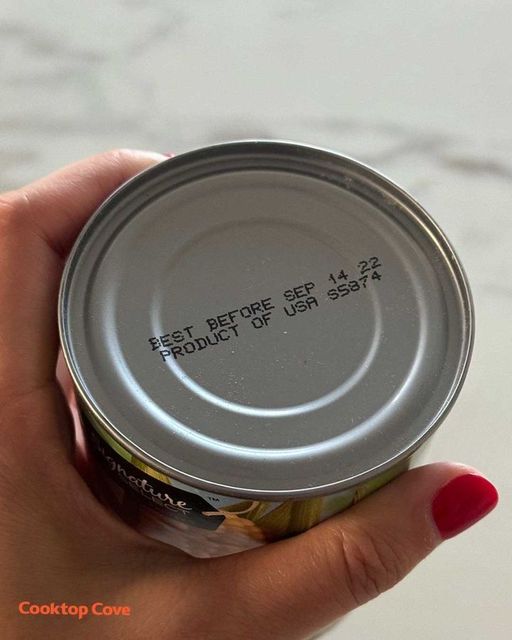ADVERTISEMENT
### **What Are “Best By” and “Best Before” Dates?**
Before diving into the specifics of how to read these dates, it’s important to understand what they actually mean. These terms are often used interchangeably, but they actually serve different purposes, even though the differences can sometimes seem subtle.
#### **Best By Date:**
A “Best By” date refers to the date that the manufacturer believes the product will be at its peak quality. This doesn’t necessarily mean the product will be unsafe after this date; it just may not taste as good or have the same texture. Typically, these dates appear on products like cereals, snack foods, or canned goods that are meant to be enjoyed fresh or within a specific period for optimal flavor and texture.
The “Best By” date is often found on items with a long shelf life, such as canned foods, dried goods, or frozen products. It’s not about food safety; it’s about quality. Products can remain safe to consume after the “Best By” date as long as they’ve been stored properly.
#### **Best Before Date:**
The “Best Before” date is a bit more specific to quality and freshness. This term is often used on perishable foods like dairy, meats, and prepared meals. Like the “Best By” date, the “Best Before” date indicates when the product will be at its best in terms of flavor, texture, and nutritional value. However, after this date, the product may still be safe to eat, but it could have begun to degrade in quality.
The “Best Before” date is particularly common in the UK and Canada and can be found on products like yogurt, fruit juices, and refrigerated meals.
—
### **Are “Best By” and “Best Before” Dates Regulated?**
One of the biggest questions people have is whether these dates are regulated by the government. The answer is both yes and no. In the United States, for example, the Food and Drug Administration (FDA) does not require manufacturers to put a “Best By” or “Best Before” date on most products. The exception is infant formula, which has strict labeling regulations. However, manufacturers are encouraged to label their products to indicate when they are likely to be at their best.
The dates are typically set based on extensive testing done by the manufacturers, considering factors such as product composition, packaging, and storage conditions. However, these dates are meant to be guidelines for consumers and aren’t a guarantee of the product’s safety or quality beyond the indicated date.
In countries like the UK, Canada, and the European Union, there are stricter regulations governing the use of these labels. The term “use by” is often used for perishable products that have a definitive expiration date, while “Best Before” is more commonly used for long-lasting foods. Even then, the date is primarily a guideline for quality rather than a marker of spoilage.
—
### **What Do These Dates Really Mean?**
Let’s now break down how you can interpret these dates on your food items:
1. **The Date Is a Guide for Quality, Not Safety:**
The “Best By” and “Best Before” dates provide a snapshot of when a product will likely taste its best or be most effective. However, the vast majority of foods are still safe to eat after this date as long as they have been properly stored. A can of soup, for example, might lose some flavor and texture after its “Best By” date, but it won’t suddenly become unsafe to eat.
2. **Packaging and Storage Matter:**
The storage conditions for food products play a significant role in determining whether a product will stay fresh. For instance, if you store canned goods or dry products like pasta and rice in a cool, dry, and dark location, they will generally last much longer than if they’re exposed to heat, humidity, or sunlight. This is especially true for products like crackers, cookies, and cereals, where stale flavor or texture changes are common, but the food is still edible.
3. **Shelf Life vs. Safety:**
Expiration dates are concerned with shelf life – that is, the period of time during which the food will remain at its peak quality. However, just because a product reaches its “Best By” or “Best Before” date doesn’t mean it is unsafe to eat. Canned goods, for example, can last well beyond their “Best By” date without any significant safety concerns, provided the can is intact and hasn’t been compromised.
For Complete Cooking STEPS Please Head On Over To Next Page Or Open button (>) and don’t forget to SHARE with your Facebook friends
